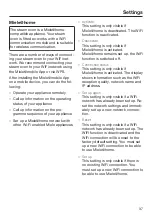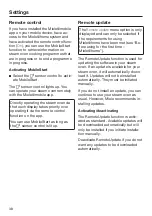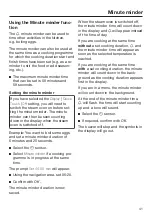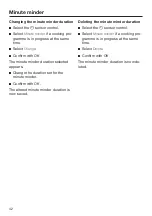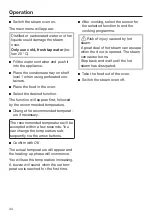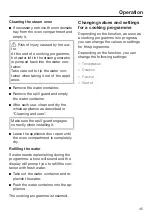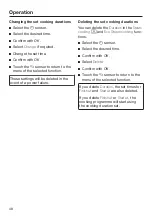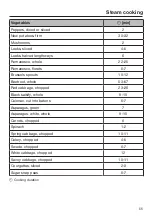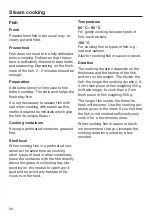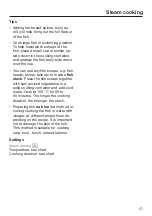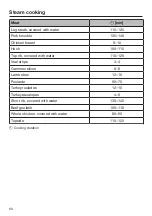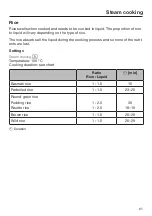
General notes
50
This section contains general informa-
tion. You will find more detailed inform-
ation about particular foods and how to
cook them in the other sections.
The advantages of cooking
with steam
Almost all vitamins and minerals are re-
tained as the food is not immersed in
water.
Cooking with steam also retains the
true taste of the food better than con-
ventional cooking. We therefore recom-
mend seasoning the food after it has
been cooked. Food also retains its
fresh, original colour.
Suitable containers
Cooking containers
This steam oven is supplied with stain-
less steel cooking containers. Other
containers, in a variety of sizes, both
perforated and solid, are available as
optional extras (see “Optional accessor-
ies”). This enables you to choose the
most suitable container for the food you
are cooking.
It is best to use perforated containers
for steam cooking. The steam can
reach the food from all sides and the
food is cooked evenly.
Your own containers
You can also use your own containers.
However, please note the following:
– Containers must be heat-resistant to
100 °C and able to withstand steam.
With plastic containers please check
with the manufacturer that they are
suitable for use in a steam oven.
– Thick-sided containers such as por-
celain, ceramic, or stoneware are not
very suitable for using with steam.
Due to their thick sides, they do not
conduct heat well and as a result
cooking durations will be consider-
ably longer than those given in the
tables.
– Place the cooking container on the
rack or in a suitable container, and
not on the oven floor.
– Ensure that there is a gap between
the upper rim of the container and
the top of the cooking compartment
to allow sufficient steam into the con-
tainer.
Condensate tray
Place the condensate tray on shelf level
1 when using perforated containers.
This collects any drops of liquid and al-
lows these to be removed easily.
You can also use the condensate tray
as a cooking container if necessary.


